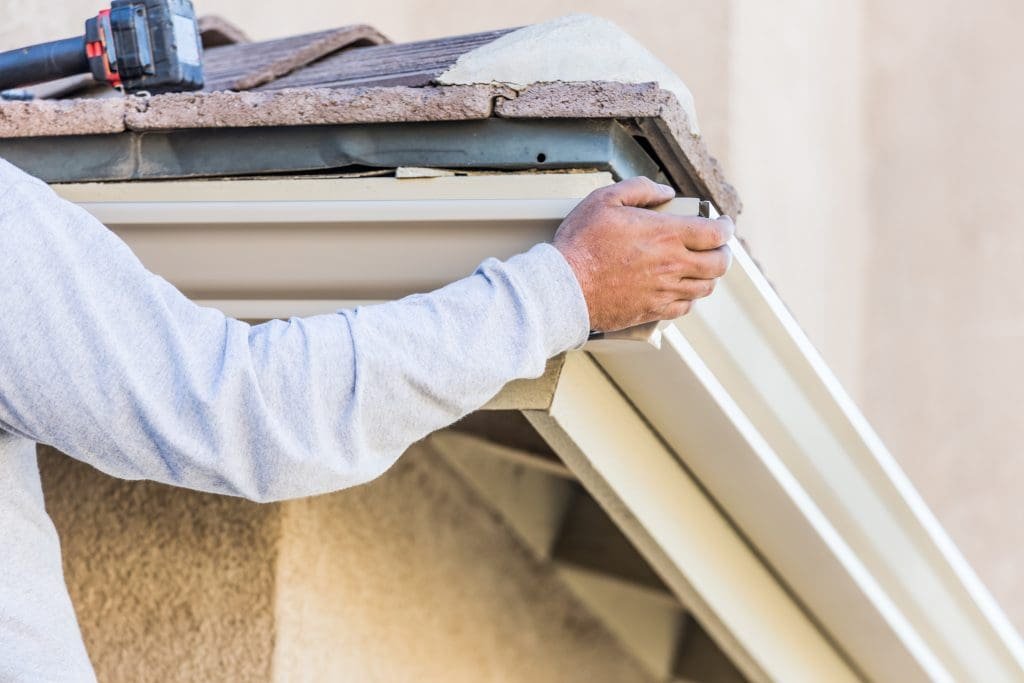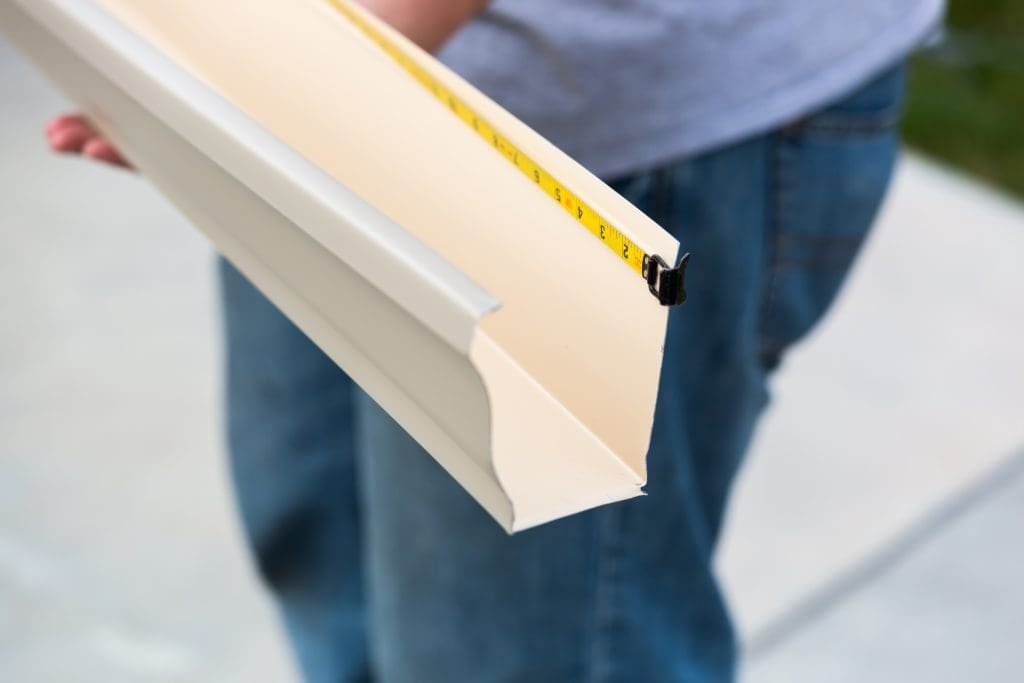Gutters are an essential part of any home’s exterior. They play a crucial role in directing rainwater away from the foundation, preventing water damage and erosion. However, like any other component of your home, gutters require regular maintenance and occasional repairs. In this article, we will explore the do’s and don’ts of gutter repair to help you keep your gutters in optimal condition.
Understanding the Importance of Gutter Repair

Before we delve into the do’s and don’ts of gutter repair, let’s first understand why gutter maintenance is vital. Gutters are responsible for collecting and channeling rainwater away from your home’s structure. When gutters are clogged or damaged, water can overflow and find its way into your foundation, basement, or crawl space. This can lead to a host of issues, including mold growth, structural damage, and compromised indoor air quality. To avoid these costly problems, it’s crucial to prioritize regular gutter maintenance and timely repairs.
The Role of Gutters in Home Maintenance
Gutters are your home’s first line of defense against water damage. They help prevent water from pooling around your foundation, where it can seep into the soil and cause it to expand, potentially leading to cracks and other issues. By directing rainwater away from your home, gutters protect the structural integrity of your foundation and prevent moisture-related problems.
Consequences of Neglecting Gutter Repair
Neglecting gutter repair can have severe consequences for your home. When gutters are clogged with leaves, twigs, and other debris, water cannot flow freely. This can cause water to overflow, leading to leaks, water stains on your siding, and damage to your landscape. Over time, the accumulated moisture can cause rot and decay in the fascia, soffit, and other structural elements. Additionally, clogged gutters provide an ideal breeding ground for pests like mosquitoes and termites. Therefore, it’s essential to address any gutter issues promptly and not ignore them.
Now, let’s take a closer look at the potential damage that can occur when gutter repair is neglected. When water overflows from clogged gutters, it can seep into your foundation, creating a damp environment that is perfect for mold growth. Mold not only poses health risks to you and your family but can also cause significant damage to your home’s structure. It can weaken the foundation, compromise the integrity of walls, and lead to costly repairs.
In addition to mold growth, neglected gutter repair can also result in basement flooding. When water is not properly directed away from your home, it can find its way into your basement, causing water damage to your belongings and potentially ruining the space. Basement flooding can also lead to electrical issues, as water and electricity do not mix well. This can pose a safety hazard and require expensive repairs.
Furthermore, when gutters are damaged or clogged, water can accumulate near your home’s exterior walls. This can lead to the deterioration of the siding, causing it to warp, crack, or rot. Not only does this affect the aesthetic appeal of your home, but it also compromises its structural integrity. Damaged siding can allow water to seep into the walls, leading to further damage and potentially costly repairs.
Lastly, neglected gutter repair can attract unwanted pests to your home. Clogged gutters provide an ideal breeding ground for mosquitoes, which can not only be annoying but also carry diseases. Additionally, termites are attracted to moisture, and clogged gutters can create the perfect environment for them to thrive. These pests can cause significant damage to your home’s wooden structures, leading to expensive repairs and potential safety hazards.
In conclusion, understanding the importance of gutter repair goes beyond the prevention of water damage. It involves safeguarding your home from mold growth, basement flooding, siding deterioration, and pest infestations. Regular maintenance and timely repairs are essential to protect your home’s structural integrity and maintain a safe and healthy living environment.
The Do’s of Gutter Repair

Identifying the Need for Gutter Repair
The first step in effective gutter repair is identifying the signs of damage or clogging. Regularly inspect your gutters for any visible cracks, leaks, or sagging sections. These issues can occur due to various factors, such as age, weather conditions, or improper installation. It’s important to note that neglecting gutter problems can lead to more significant issues, such as foundation damage or basement flooding.
Look for water stains on your exterior walls or peeling paint, as these can indicate improper water drainage. These signs are not only unsightly but can also be a breeding ground for mold and mildew, which can pose health risks to you and your family. Additionally, indicators of clogged gutters include water overflow during heavy rains or the presence of plants growing out of the gutters. These blockages can prevent water from flowing freely, causing potential damage to your roof, siding, or landscaping.
Choosing the Right Tools and Materials
When it comes to gutter repair, using the right tools and materials is crucial. Invest in a sturdy ladder or scaffolding system that can safely support your weight while working at heights. This will ensure your safety while inspecting and repairing your gutters. Remember, it’s always better to be safe than sorry.
Additionally, you will need gloves, a trowel, a bucket, and a garden hose for the cleaning process. Removing debris, such as leaves, twigs, or dirt, from your gutters is essential to maintain their functionality. Neglecting this step can lead to clogs and blockages, causing water to overflow and potentially damage your home’s foundation or landscaping.
For repairs, make sure to use high-quality sealants, such as silicone or gutter epoxy, to seal any cracks or leaks effectively. These sealants are designed to withstand various weather conditions, ensuring a long-lasting solution to your gutter problems. It’s important to choose the right sealant for your specific gutter material, whether it’s aluminum, vinyl, or steel, to ensure proper adhesion and durability.
Safety Measures to Follow
Gutter repair often involves working at heights, so it’s essential to follow proper safety measures. Always use a sturdy ladder placed on a stable surface, and have someone else nearby to assist you if needed. Remember, accidents can happen, and having an extra set of hands can make a significant difference in ensuring your safety.
Wear non-slip shoes or boots to provide traction and stability while working on your gutters. This will help prevent slips and falls, especially when dealing with wet or slippery surfaces. If you’re working on a steep roof, consider using a safety harness for added protection. It may seem like an extra step, but it can provide peace of mind and prevent serious injuries.
Lastly, be cautious of electrical lines and ensure you don’t come into contact with them while repairing or cleaning gutters. It’s crucial to stay aware of your surroundings and take necessary precautions to avoid any potential electrical hazards. If you’re unsure about the location of electrical lines, it’s best to consult a professional to ensure your safety.
The Don’ts of Gutter Repair

Common Mistakes in Gutter Repair
While proper maintenance and repairs can extend the lifespan of your gutters, there are certain common mistakes you should avoid:
- Avoid using sharp tools like knives or screwdrivers to remove debris from your gutters, as they can damage the gutter material.
- Don’t rely solely on gutter guards or covers to keep your gutters clean. Regular cleaning is still necessary to remove smaller debris that may accumulate.
- Avoid using excessive force when cleaning or repairing gutters, as it can lead to further damage.
Practices to Avoid for Long-Term Damage
To ensure the longevity of your gutters and avoid unnecessary repairs, it’s essential to steer clear of certain practices:
- Don’t neglect regular gutter cleaning and maintenance; this will help prevent clogs and reduce the risk of damage.
- Avoid placing heavy objects on your gutters, as this can cause them to bend or break.
- Don’t forget to check your downspouts for clogs and ensure they are channeling water away from your home’s foundation.
When to Call a Professional
While many gutter repairs can be done as a DIY project, there are instances when it’s best to seek professional help. If you are uncomfortable working at heights, lack the necessary tools, or if the damage is extensive, it’s advisable to contact a gutter repair specialist. They have the expertise and equipment to tackle complex repairs and ensure your gutters are functioning optimally.
However, there are a few additional situations where calling a professional is highly recommended:
Firstly, if you notice any signs of water damage or leakage inside your home, it’s crucial to seek professional assistance. These issues could be indicative of more significant problems with your gutters, such as improper installation or severe blockages. A professional can assess the situation and provide the necessary repairs to prevent further damage to your property.
Secondly, if you live in an area with extreme weather conditions, such as heavy rainfall or snowfall, it’s wise to consult a professional gutter repair service. They can evaluate your gutters’ durability and recommend any reinforcements or modifications needed to withstand the harsh elements. This proactive approach can save you from costly repairs or replacements in the future.
Remember, the key to maintaining functional gutters is a combination of regular maintenance, avoiding common mistakes, and knowing when to seek professional help. By following these guidelines, you can ensure that your gutters remain in excellent condition, effectively protecting your home from water damage.
Maintaining Your Gutters Post-Repair

Regular Cleaning and Inspection
Once you have repaired your gutters, it’s crucial to establish a routine for regular cleaning and inspection. Clear debris, such as leaves and twigs, from your gutters at least twice a year, or more frequently if you live in an area with heavy rainfall or surrounded by trees. Use a trowel or scoop to manually remove the debris and flush your gutters with a garden hose to ensure they are clear of any remaining material.
Regular cleaning and inspection not only prevent clogs but also allow you to identify any potential issues early on. During your cleaning process, keep an eye out for signs of wear and tear, such as rust, loose screws, or sagging sections. Addressing these problems promptly can help prevent more significant damage and costly repairs down the line.
Seasonal Gutter Care Tips
In addition to regular cleaning, there are specific steps you can take throughout the year to protect and maintain your gutters:
- During winter, remove ice dams promptly to prevent water backup and potential gutter damage. Ice dams can form when snow melts and refreezes at the edge of your roof, causing a barrier that prevents proper drainage. Use a roof rake or a gentle stream of warm water to melt the ice and clear the obstruction.
- In spring, trim tree branches overhanging your roof and gutters to minimize the risk of falling leaves and branches clogging the system. This proactive measure can significantly reduce the amount of debris that ends up in your gutters, making your cleaning efforts more manageable.
- Before the rainy season, double-check that your downspouts are securely attached and directing water away from your foundation. Improperly positioned or disconnected downspouts can lead to water pooling near your home’s foundation, potentially causing structural damage over time.
By following these seasonal gutter care tips, you can ensure that your gutters remain in optimal condition year-round, effectively protecting your home from water damage.
Prolonging the Lifespan of Your Gutters
To extend the lifespan of your gutters and minimize the need for repairs, consider implementing the following practices:
- Regularly clean your gutters and downspouts to prevent clogs and maintain proper water flow. Neglecting this essential task can lead to overflowing gutters, which can damage your roof, siding, and foundation.
- Keep your gutters free from debris by trimming nearby trees and bushes to prevent leaves and twigs from accumulating. While trees provide shade and beauty to your property, they can also be a significant source of gutter-clogging debris. Regularly trimming overhanging branches can significantly reduce the amount of maintenance required.
- Monitor your gutters’ condition and address any signs of damage or leaks promptly. Look for cracks, holes, or separation between gutter sections, as these can compromise the functionality of your system. Applying a waterproof sealant or patching small damages can help prevent further deterioration.
By following these practices, you can prolong the lifespan of your gutters and minimize the need for extensive repairs. Remember, proper maintenance is key to keeping your gutters functioning optimally and protecting your home from water-related issues.
In conclusion, proper gutter repair and maintenance are essential for the longevity and structural integrity of your home. By following the do’s and avoiding the don’ts, you can prevent costly water damage and ensure that your gutters perform their vital role effectively. Regular inspections, timely repairs, and routine cleaning will go a long way in protecting your home from the damaging effects of rainwater. Remember, when in doubt or if the repair is beyond your abilities, it’s best to seek professional assistance to ensure the job is done safely and efficiently.




